Casting Flesh (18.11.2011) (2012)
Smooth-on EcoFlex >> http://www.smooth-on.com/Platinum-Cure-Sili/c1115_1130/index.html

Casting Eco-Flex silicone into mold. I mixed 7oz (3.5A:3.5B) of Eco Flex to fill the mold. It normally takes 4 hours to cure, but because it was so cold in my studio it took twice as long (i left it overnight, so maybe it even took longer).
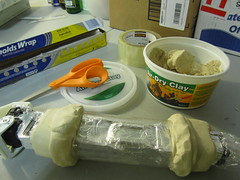
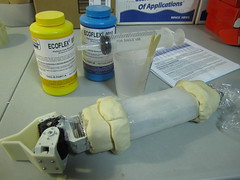
Removing cured silicone from mold. The inside of the cast silicone is shaped by the aluminum foil wrapped around the arm, so there is not so much detail. The cast flesh would fit better if this was done better.
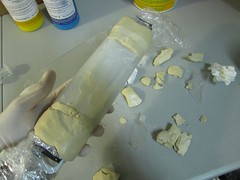
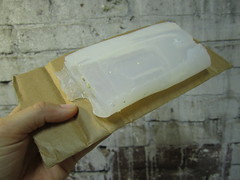
The result is a very squishy layer of silicone that i think will work really well to create a more uniform buffer layer between sensitive skin and hard robot arm. It might also have its downsides, as pressuring in any one point will automatically affect surrounding sensors, as they will be stretched into the indentation of the pressure point.
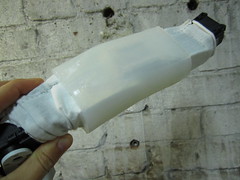
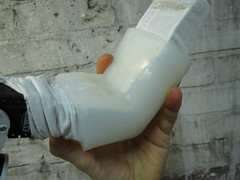
Video